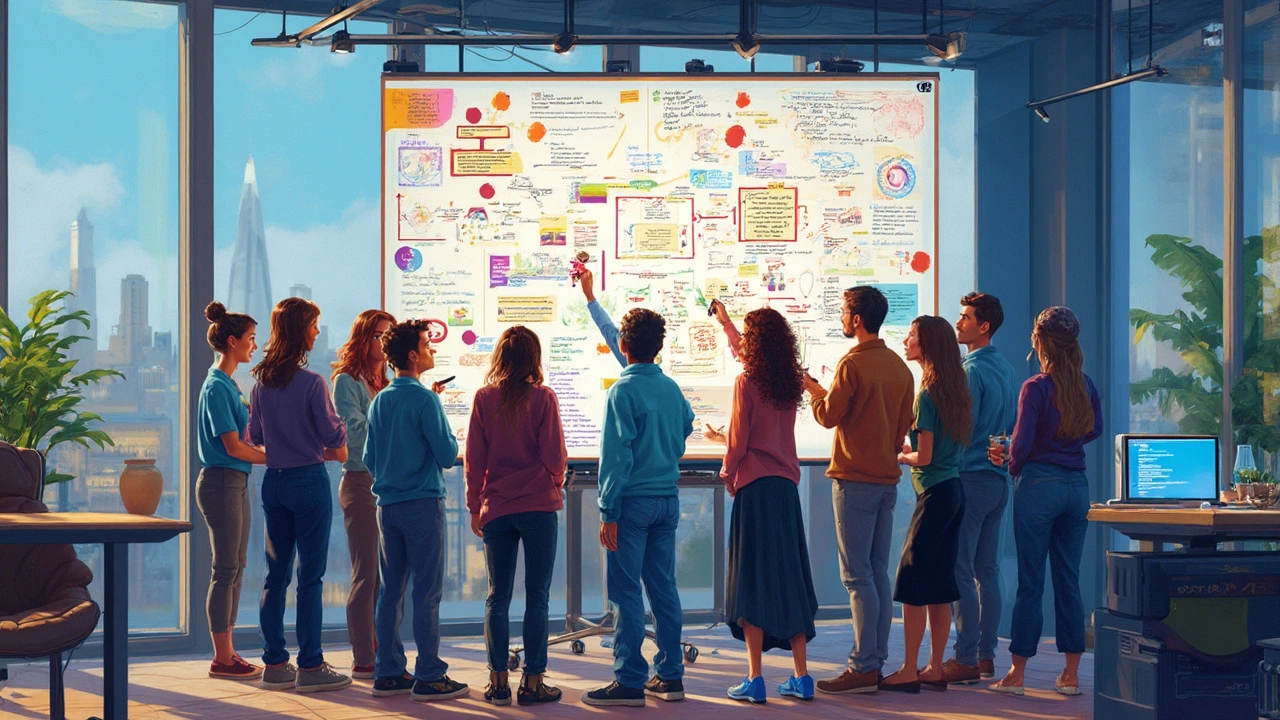AI isn’t this mysterious thing reserved for big tech; it’s powering everything from the way we binge shows in Melbourne to how Lily gets customized homework help. But knowing where to start with Python for AI can feel like staring at a blank canvas—with a hundred brushes scattered around. What do you actually need in your toolkit, and how do you know what’s worth your time?
Python AI Toolkit: What You Really Need in 2025 (TL;DR)
- Focus on Python libraries that handle data, models, and deployment—skip the fluff.
- Python AI toolkit essentials: NumPy, pandas, scikit-learn, TensorFlow, PyTorch, Hugging Face Transformers, and Streamlit.
- No single library handles it all; mix and match for your project and skills.
- Community support and regular updates are non-negotiable.
- Test-drive tools with real data and small prototypes before going all in.
Building the Ultimate Python AI Toolkit: Step-By-Step
First up, let’s get honest—no one builds anything impressive in AI without digging into some tools. But you don’t need to master them all at once, and you definitely shouldn’t waste hours chasing shiny but hollow libraries. Here’s the step-by-step to setting up your Python AI toolkit the way most modern pros do in 2025.
- Pick the Right Python Version: In 2025, Python 3.12.1 is a safe bet. It's supported by every major AI library, plays nicely with M1/M2 Macs, and doesn’t break older code.
- Choose Your Core Libraries:
- NumPy: For efficient numerical operations.
- pandas: Whenever your AI needs to chew through data tables and CSVs.
- scikit-learn: For classic machine learning—think regression, classification, clustering.
- TensorFlow & PyTorch: These power modern neural networks and deep learning. Pick one to focus on first (PyTorch is usually more beginner-friendly in 2025).
- Hugging Face Transformers: If you’re working with text, you want these pre-trained language models.
- Streamlit: This one’s for quickly demoing your AI tool with a simple web UI. Think fast prototypes your friends can actually use.
- Set Up a Virtual Environment: Use venv or Conda. That way, you don’t wreck other projects and you keep dependencies tidy.
- Install Jupyter Notebooks: For fast testing and tweaking—especially if, like me, you run half your demos while wrangling kids.
- Add GPU Support (if possible): The newer laptops (even in Australia) can usually be set up for GPU with just a couple of extra drivers. Your models will train hours faster.
That setup right there will cover 90% of anything you want to build in Python AI—from chatbots and text summarizers to music recommenders. Don’t bother with the latest hyped libraries until you outgrow these; otherwise, you’ll end up with a graveyard of abandoned projects and a headache.
Putting the Toolkit to Work: Real-World Examples
No theory dump here—let’s talk specifics. You’ve got your toolkit; now, what does it look like in practice?
- Chatbot for Local Businesses: Use Hugging Face Transformers plus Streamlit to whip up a chatbot that answers customer questions for your favorite local café by pulling in their menu data from a pandas DataFrame.
- Personalized Homework Helper: This one's from experience—Oliver needed a math practice app last year. I leaned on scikit-learn for question selection and Jupyter Notebooks to quickly visualize which topics were giving him trouble.
- Stock Trend Predictor: For those who like numbers, combine NumPy, pandas, and TensorFlow. Grab historical stock prices, crunch them, fit a LSTM network in TensorFlow, then display trends and predictions in Streamlit with a slider for date range.
- Custom Recommendation System: Netflix? Too mainstream. Try building a music or recipe recommender with scikit-learn and pandas using your own preferences as training data.
Most importantly: test-drive on small real things before scaling up. The combo of pandas + scikit-learn is fantastic for this because they don’t eat up memory or time. And if you’ve got a gaming PC or a MacBook with Apple Silicon, TensorFlow and PyTorch both support modern hardware out of the box as of July 2025.

AI Toolkit Checklist and Quick Reference Cheat-Sheet (2025)
Don’t want to play library bingo? Here’s the cheat sheet. Use it to check if your AI idea is covered.
| Tool/Library | Main Use | Why Use It? | 2025 Update |
|---|---|---|---|
| NumPy | Math, Arrays | Fast math ops; backbone for all engineering | Stable, new fast-math APIs |
| pandas | Tables, CSVs | Lightning-fast data cleaning/analysis | Better multicore support, huge datasets |
| scikit-learn | Machine Learning | Reliable algorithms, easy syntax | 2025 v2.0 is backward-compatible |
| TensorFlow | Deep Learning | Production-grade models, flexible | Works natively with Apple silicon & AMD |
| PyTorch | Deep Learning | Simpler syntax, rapid prototyping | 2025 release adds faster compile |
| Hugging Face | NLP (Text/Language) | Top language models out-of-the-box | Mini-models for edge devices |
| Streamlit | UI/Demo | Turn code into a web app ASAP | 2025 supports mobile-friendly UIs |
| Jupyter Notebook | Experiment | Live code, charts, narratives | Direct browser integration |
- Rule of thumb: Start with scikit-learn for most models; only jump to TensorFlow or PyTorch if you need deep learning or heavy customizations.
- Test everything in Jupyter—not as a one-off, but as a daily workspace.
- Don’t build from scratch. Hugging Face, especially in 2025, has mini-models for mobiles and Raspberry Pi (finally!).
- Pandas is for data cleaning, not for handling raw images or videos—load those with OpenCV or PIL and process separately.
And whatever you do, avoid grabbing the latest tool just because someone raves about it on social media. Unless it’s widely supported or recommended in large public projects, it’s likely to fade by 2026.
2025’s Python AI Tools: FAQ for Modern Programmers
- What’s the best starting point if I’m new to AI?
Go with scikit-learn and pandas. Skip deep learning until you’re comfy with basic models. - Can you combine TensorFlow and PyTorch?
Technically yes, but in practice, projects stick to one for sanity. Learning both helps you read more code, though. - Is it worth switching to the 2025 releases of all libraries?
Yes, especially for speed and hardware support. But always check your dependencies aren’t broken. - Do I need a GPU to work with these tools?
Great for deep learning, but you can do plenty of ML on just a decent CPU with RAM. - Can I build commercial apps on Streamlit?
Sure—lots of small teams in Melbourne are launching MVPs with it, especially internal dashboards and quick proofs-of-concept.
Practical Next Steps: Choose What Fits You
Here’s how to move forward, wherever you’re at:
- Just getting started? Install Python 3.12.1, pip install pandas and scikit-learn, then play around with a simple dataset. The Titanic survival dataset is always a classic.
- Ready for production? Test things in Streamlit or as Flask APIs, automate your installs with requirements.txt, and look for tutorials on deploying to cloud (AWS Lambda or Google Cloud Run are common in Australia now).
- Text and language projects? Jump into Hugging Face’s library and try their demo scripts on your own emails or chat logs—privacy rules in 2025 are strict, so test locally first.
- Edge AI or IoT? Try Hugging Face’s mobile-ready models, or look for versions that run on NVIDIA Jetson or Raspberry Pi. TinyML is hot this year, but needs careful hardware picks.
- Want in-person help? Check your local Python user groups (Melbourne’s is excellent) or attend open office hours online—most tool authors respond on GitHub and Discord these days.
Whether you’re building with your kids or prototyping at work, Python for AI in 2025 boils down to having a lean, well-chosen toolkit. Get comfortable with the core libraries, build real things fast, and don’t be afraid to ask for help—because the only real dead-end is trying to learn in isolation.

